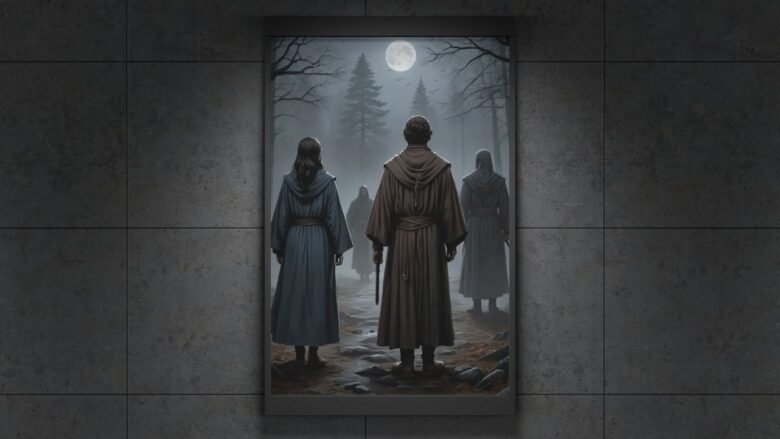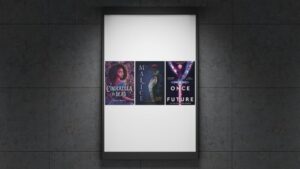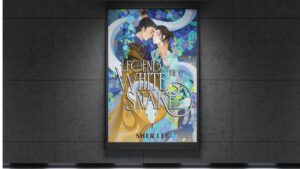Seers and mystics have always held a special place in fantasy storytelling. As figures who stand between the known and the unknown, they embody mystery, wisdom, and the often perilous burden of foresight. Their role transcends the boundaries of hero and villain, offering insight that can alter destinies and reshape worlds. In many fantasy traditions, these characters are set apart — revered, feared, or misunderstood — reflecting both the awe and the alienation that knowledge can bring.
When these archetypes intersect with LGBTQIA+ representation, they gain even deeper significance. Queer seers and mystics bring fresh dimensions to familiar narratives, embodying themes of transformation, marginalization, resilience, and vision. Their stories often parallel real-world queer experiences of being both excluded and empowered, of finding truth within oneself despite external judgment. These characters challenge conventions, offering richer, more inclusive portrayals of magic, identity, and community.
In this guide, we’ll explore some of the best LGBTQIA+ seers and mystics in fantasy literature. Each recommendation highlights a character whose queerness is not incidental but integral to their role and their journey. We’ll discuss why these characters resonate, what themes they illuminate, and how they help expand the genre’s understanding of destiny, intuition, and power. Whether you’re looking for your next unforgettable read or seeking to better understand the fusion of queer identity and visionary magic, this list offers a doorway into stories that see the world — and the future — a little differently.
Why Seers and Mystics Resonate in Queer Narratives
In fantasy, seers and mystics are often depicted as outsiders — individuals who exist on the margins of society due to their extraordinary abilities. Their gift of foresight sets them apart, making them both revered and feared. This sense of “otherness” mirrors the real-world experiences of many LGBTQIA+ individuals, who often grow up feeling isolated from mainstream expectations and norms. The mystic’s journey, marked by rejection, self-discovery, and transformation, resonates deeply with queer narratives.
The symbolism of foresight in these characters can represent the ability to envision different futures — not only for themselves but for the worlds they inhabit. In queer contexts, this power echoes the imaginative resilience required to envision lives and communities beyond oppressive structures. Like seers who must trust in visions unseen by others, queer individuals often must believe in possibilities that dominant cultures deny or erase.
Furthermore, mystics and seers reclaim power through knowledge, intuition, and magic — tools historically undervalued or mistrusted when wielded by those seen as “other.” In queer narratives, these elements become metaphors for reclaiming agency and self-worth. Knowledge of oneself, intuition about one’s path, and the magic of creating chosen families or defying expectations all align with the experiences of LGBTQIA+ individuals navigating a world that often demands conformity.
By intertwining queerness with mystical insight, fantasy stories create layered, compelling portraits of characters who are not only survivors but visionaries. These seers and mystics challenge rigid systems and offer new ways of understanding power, identity, and belonging — making their stories especially vital and resonant for queer readers and allies alike.
Criteria for Selection
To curate this guide, we focused on specific criteria to ensure the characters featured represent the best examples of LGBTQIA+ seers and mystics in fantasy literature.
First and foremost, strong LGBTQIA+ representation was essential. Each character’s queer identity is acknowledged, respected, and meaningfully woven into the story. We prioritized works where sexuality, gender identity, or queerness is an integral aspect of the character’s life, not merely hinted at or relegated to subtext.
Secondly, we selected characters who are central to the narrative, rather than being peripheral figures or symbolic background elements. The seers and mystics highlighted here drive the plot forward, influence major decisions, and shape the world around them. Their presence is vital, not decorative.
Finally, we emphasized complexity, agency, and nuance. These characters are not stereotypes or one-dimensional prophets. They are portrayed with emotional depth, personal struggles, and evolving relationships. Their journeys reflect resilience, moral ambiguity, and growth, offering readers a rich, realistic portrayal of what it means to see — and sometimes be burdened by — truths that others cannot.
By holding to these standards, we aim to present a guide that not only celebrates queer visibility in fantasy but also honors the full humanity of these visionary characters.
Top LGBTQIA+ Seers and Mystics in Fantasy
Moirin from Tales of Moirin by Jacqueline Carey
Moirin, the protagonist of Jacqueline Carey’s trilogy, is deeply tied to divine forces through visions, spiritual quests, and inherited magic. She is a seer whose abilities stem from her dual heritage — a blend of D’Angeline passion and Alban druidic tradition. Moirin’s bisexuality is openly explored throughout the series, portrayed not as a plot device but as a natural and celebrated part of her identity. Her spiritual connection to gods and destiny drives her journey across continents, where love, faith, and foresight intertwine to shape her path and the fate of those around her.
Xochitl from The Mirror Season by Anna-Marie McLemore
Xochitl, a genderqueer character at the heart of The Mirror Season, possesses an intuitive form of magic connected to the world’s brokenness and beauty. Though not a traditional oracle, their ability to perceive emotional and metaphysical fractures places them firmly in the tradition of the seer. Xochitl’s journey is one of profound healing after trauma, using magic to mend both themselves and others. Their identity as genderqueer is seamlessly woven into the narrative, highlighting the intersection of personal transformation and magical perception in a way that feels honest, tender, and empowering.
Nona Grey from Book of the Ancestor by Mark Lawrence
Nona Grey, while not a seer in the traditional sense, is imbued with mystical abilities that hint at prophecy and deep intuitive understanding. The series presents her within a world where supernatural gifts and visions are real, and Nona’s queer-coded identity is subtly present throughout her development. Central to her story are the bonds she forms with other girls at the Convent of Sweet Mercy, creating a found family bound by love, loyalty, and shared survival. Her path reflects the mystical and emotional themes often associated with outcast seers in fantasy.
Ead Duryan from The Priory of the Orange Tree by Samantha Shannon
Ead Duryan is a sorceress and secret guardian who serves a queen while secretly wielding forbidden magic tied to ancient lore. Her lesbian identity is openly depicted, with her romantic relationship becoming a vital emotional anchor in the story. Ead’s role blends mysticism, espionage, and deep faith, challenging the structures of power around her. Through magic and hidden knowledge, she reclaims agency and reshapes the destiny of her world, offering a portrait of a queer mystic who navigates moral complexity without sacrificing her core integrity.
El from A Dead Djinn in Cairo by P. Djèlí Clark
In A Dead Djinn in Cairo, the character of Agent Fatma el-Sha’arawi (El) operates in a richly reimagined Cairo where magic and the supernatural are part of daily life. While primarily portrayed as a detective, El is deeply intertwined with mystical heritage and cultural magic. Her gender nonconforming presentation and queer identity are subtly but significantly depicted, adding depth to her interactions with both human and magical beings. El’s story is an excellent example of how queerness and mystical knowledge intersect to challenge colonial and patriarchal systems.
Honorable Mentions
- The Prophet from An Unkindness of Ghosts by Rivers Solomon: A nonbinary character whose visions and insights guide others through systemic oppression aboard a generational ship.
- Kippa from Monstress by Marjorie Liu and Sana Takeda: Though primarily a side character, Kippa’s otherworldly intuition and connections to the supernatural world support the narrative’s deeper magical themes.
- Esther from The Seep by Chana Porter: A trans woman navigating an alien utopia where psychic shifts and new realities challenge the concept of self and future.
Themes Across These Stories
Across the stories of these LGBTQIA+ seers and mystics, several powerful patterns emerge, weaving a common thread through diverse narratives and worlds.
One major recurring theme is exile and belonging. Many of these characters live on the margins of their societies, either by choice or through rejection. Their abilities set them apart, often making them objects of fear or suspicion. However, rather than remaining isolated, these mystics frequently forge alternative forms of community — whether through found families, alliances, or inner spiritual journeys — redefining what belonging means outside traditional structures.
Another consistent element is visionary insight. These characters not only predict or sense the future; they actively imagine and fight for futures that defy oppressive norms. Their foresight becomes an act of rebellion and hope, suggesting that being able to envision change — whether magical, social, or personal — is itself a powerful and transformative force.
Queer mystics also challenge traditional fantasy tropes. Where classic fantasy often depicts seers as detached, tragic figures bound by fate, these LGBTQIA+ characters demonstrate agency, emotion, and growth. Their visions are not simply burdens; they are sources of empowerment. Moreover, instead of being solitary sages removed from human connection, they are deeply involved in the worlds and communities around them, emphasizing the interplay between personal identity and collective destiny.
Finally, there is a strong link between queer identities and visionary futures. The ability to see beyond current realities aligns naturally with the queer experience of imagining lives and possibilities outside rigid societal expectations. These mystics, by embracing both their magical gifts and their authentic selves, embody a powerful message: that true vision comes from within, and that reimagining the future is a radical, necessary act — for individuals and for the worlds they inhabit.
Recommendations for Readers
Whether you’re drawn to dark, introspective narratives or uplifting tales of hope and resistance, there’s a wealth of LGBTQIA+ fantasy featuring mystics and seers to explore. Below are tailored recommendations based on common reader interests, as well as practical tips for discovering more inclusive fantasy titles.
Suggested Reading by Theme
If you enjoy dark fantasy with moral complexity:
- The Unspoken Name by A.K. Larkwood — Features a queer protagonist entangled in prophecy, divine servitude, and cosmic consequences.
- Black Sun by Rebecca Roanhorse — Offers rich worldbuilding, queer relationships, and a prophecy-driven plot with mythic undertones.
If you prefer hopeful, emotionally-driven stories:
- Pet by Akwaeke Emezi — A YA novel with a Black trans protagonist who sees beyond illusions to uncover hidden truths.
- Cemetery Boys by Aiden Thomas — A heartfelt paranormal fantasy centering on a trans Latinx teen who discovers spiritual powers tied to his ancestry.
If historical or culturally rooted fantasy appeals to you:
- The Jasmine Throne by Tasha Suri — Set in a lush, South Asian-inspired world with lesbian protagonists, religious visions, and forbidden magic.
- The Empress of Salt and Fortune by Nghi Vo — A quiet, lyrical novella with a nonbinary cleric uncovering lost histories and hidden power.
Tips for Finding More LGBTQIA+ Inclusive Fantasy Featuring Mystics and Seers
- Follow indie publishers and imprints known for championing diverse voices, such as Tor.com, Small Beer Press, and Erewhon Books.
- Look for award lists that highlight inclusive fantasy, such as the Lambda Literary Awards, the Otherwise Award (formerly Tiptree), and the Hugo Awards in recent years.
- Use book tags on platforms like Goodreads or StoryGraph — search for terms like “LGBTQIA+ fantasy,” “queer seer,” or “mystical protagonist.”
- Engage with queer book communities online, especially on platforms like BookTok, Reddit’s r/Fantasy, or LGBTQIA+ book blogs, where readers regularly share new discoveries.
- Explore author interviews and back matter — many authors discuss their inspiration, representation choices, and future projects, offering leads on similar works.
By seeking out these titles and staying connected to inclusive literary spaces, readers can continue discovering fantasy stories that celebrate visionary queer characters — and the powerful, complex roles they play in shaping the worlds around them.
Conclusion
Queer seers and mystics hold a unique and vital place within the fantasy genre. As characters who embody foresight, transformation, and often profound solitude, they resonate deeply with themes central to the LGBTQIA+ experience — from navigating identity and marginalization to imagining new futures outside the boundaries of traditional power structures. Their stories expand the emotional and thematic range of fantasy, offering readers not just entertainment, but insight, empathy, and vision.
These characters challenge the conventions of the genre by introducing complexity, agency, and authenticity to roles that have historically been mystical yet depersonalized. Through them, we see how magic and queerness can be forces of both survival and revolution — how to reclaim the right to see the world differently, and to be seen differently in turn.
For readers seeking deeper, more inclusive narratives, exploring these mystics is more than a genre exercise — it’s a step toward supporting a broader, richer landscape of storytelling. As the world of fantasy continues to evolve, uplifting the voices and visions of LGBTQIA+ characters and creators is not just valuable — it’s essential.
So whether you’re here to find your next favorite book or to better understand the role of queerness in visionary narratives, let this be your invitation: step into the stories where outcasts become oracles, and where seeing clearly is itself a kind of magic.




